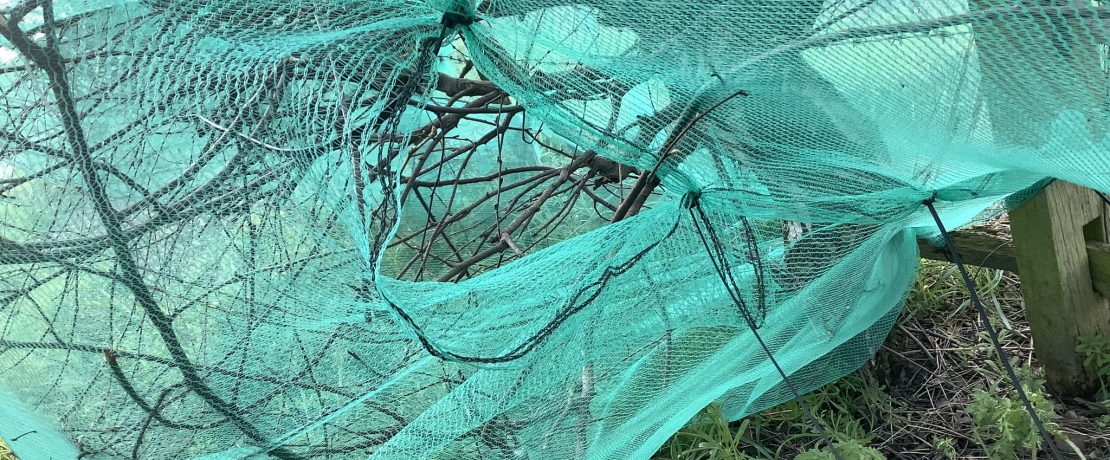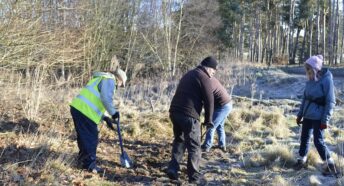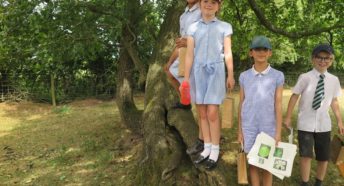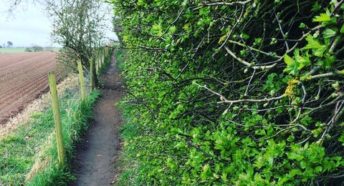Nests Not Nets
Under the Wildlife and Countryside Act, it’s illegal to do any work or damage that might harm nesting birds or destroy their nests. As the bird nesting season officially lasts from 1 March to 31 August, some developers who want to remove hedges and trees during the spring and summer have taken to covering them with netting to keep out birds.
Although this is legal, the professional body for ecologists, the Chartered Institute of Ecology and Environmental Management, as well as the Royal Society for the Protection of Birds, have expressed considerable concern about the practice and advise against it.
In a statement published in 2019, they said: “Netting is an overly simplistic approach that has become more prominent recently. There is an understandable negative reaction from both the public and from professional ecologists to the real and potential harm that it may cause to wildlife.”
Over the last couple of months, the sight of hedgerows shrouded in netting in Staffordshire has caused widespread anger. In February, Miller Homes installed netting on hedges on a development on former greenbelt land at Keepers Lane in Codsall, but removed it after a public outcry.
Unfortunately, Maplevale Homes, who are building houses at Coton Lane in Tamworth – in the constituency of Housing Minister Christopher Pincher MP – have been far less responsive and emails about the netting went unanswered.
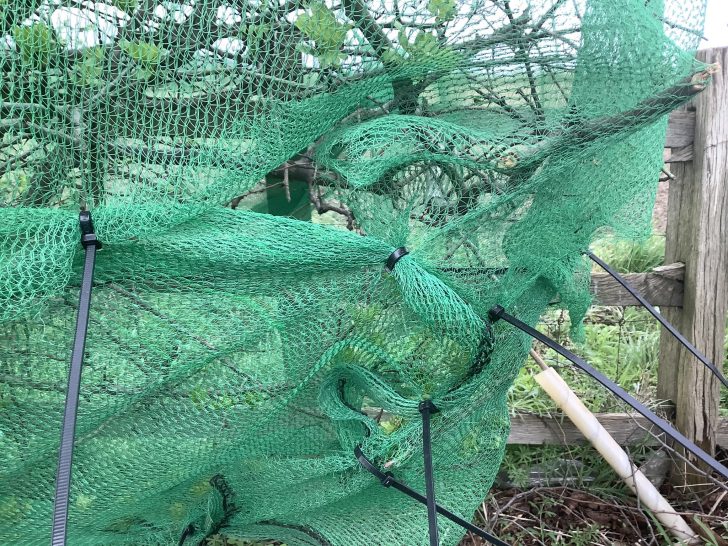
A hazard to wildlife
CIEEM and the RSPB state that netting should be checked three times a day to ensure that it has not become defective, loose or damaged. As the above photos show, the presence of numerous holes and gaps suggests that it is highly unlikely this was done.
The local resident who took the photos stated: “I was horrified to see Maplevale Homes exploiting a legal loophole in the Wildlife and Countryside Act that otherwise forbids tree and hedge work to be done during breeding season. This loophole needs to be closed, while local councils also need to start taking notice of their constituents’ concerns and strengthen planning policies that will actively discourage developers from using netting and other practices detrimental to wildlife during the breeding season.”
Well, we’ve just got back from checking & photographing netting along Coton Lane in Tamworth after it was apparently surveyed on Monday by Maplevale Homes & holes ‘made good’.
Not impressed.😕#NestsNotNetting #wildlife @NorfolkBea @TamworthCouncil @StaffsCPRE @StaffsWildlife pic.twitter.com/6D5wefIJqy
— Mrs M🌱💙💙 (@TheMorganics) April 2, 2021
Work started to remove the hedge on 6 April – just when the nesting season is well under way.
Biodiversity net gain – or loss?
CPRE Staffordshire believes that the planning system must contribute to the protection and enhancement of our natural environment and that all developments must provide a biodiversity net gain. The Tree Council recommends that any replacement hedgerows should be two or three times the length removed. Hedgerows already face a multitude of threats, including poor management, and we would much prefer them to be incorporated into a development, rather than removed. If there really is no alternative to removing them, then this should be done in the autumn or winter.
Even without netting, developers sometimes cut down trees and hedges during the nesting season. In July 2020, Bloor Homes began removing nearly 300 metres of hedgerow and other trees at a greenfield development in Penkridge. We were told that ecologists on site had located some nests on site, but these were left with an ‘appropriate buffer’.
As the RSPB states, “we cannot keep trying to squeeze nature into smaller and smaller spaces or demanding it fits in with our plans.” We need to work with nature, rather than viewing it as an irritating inconvenience.
